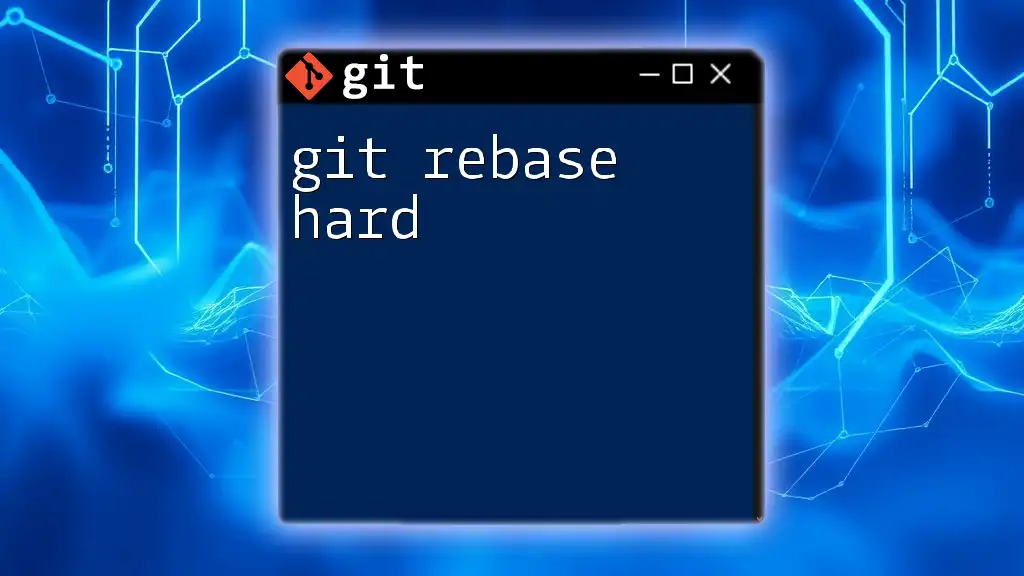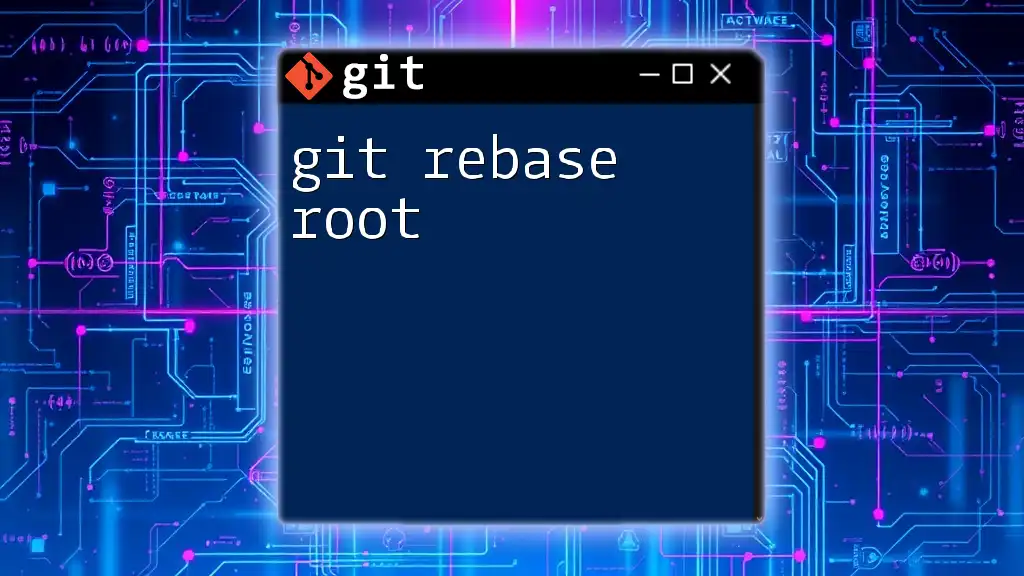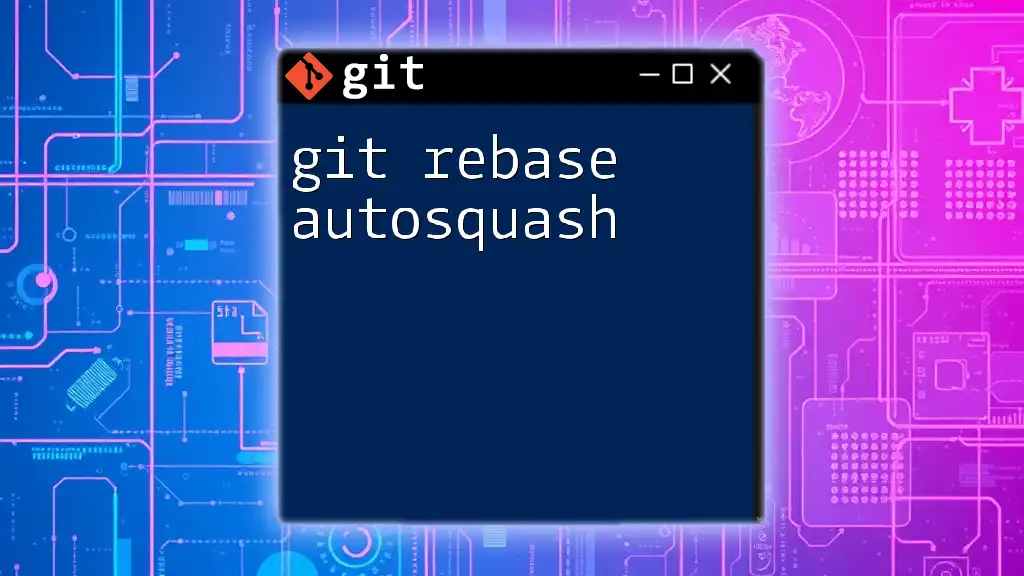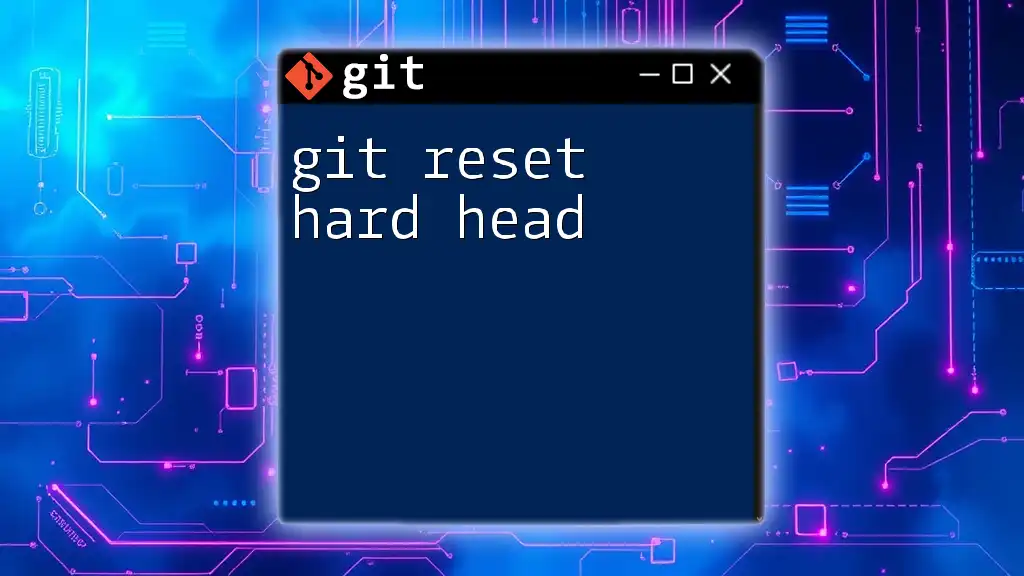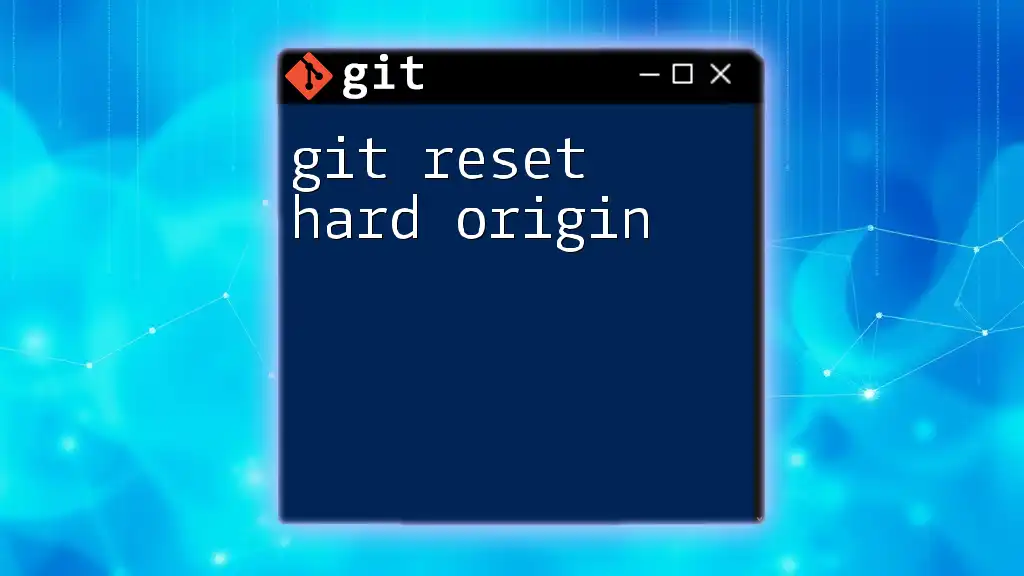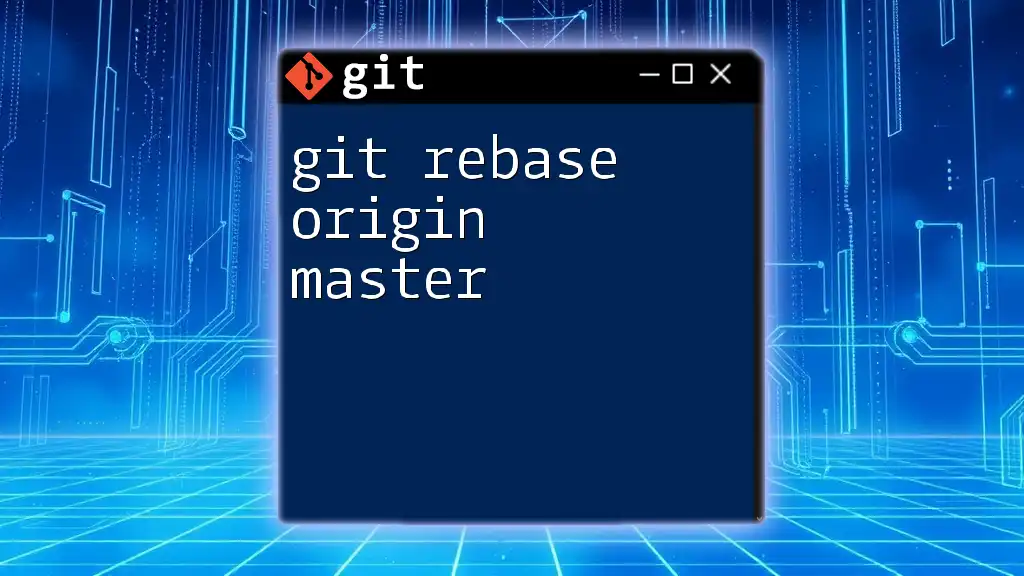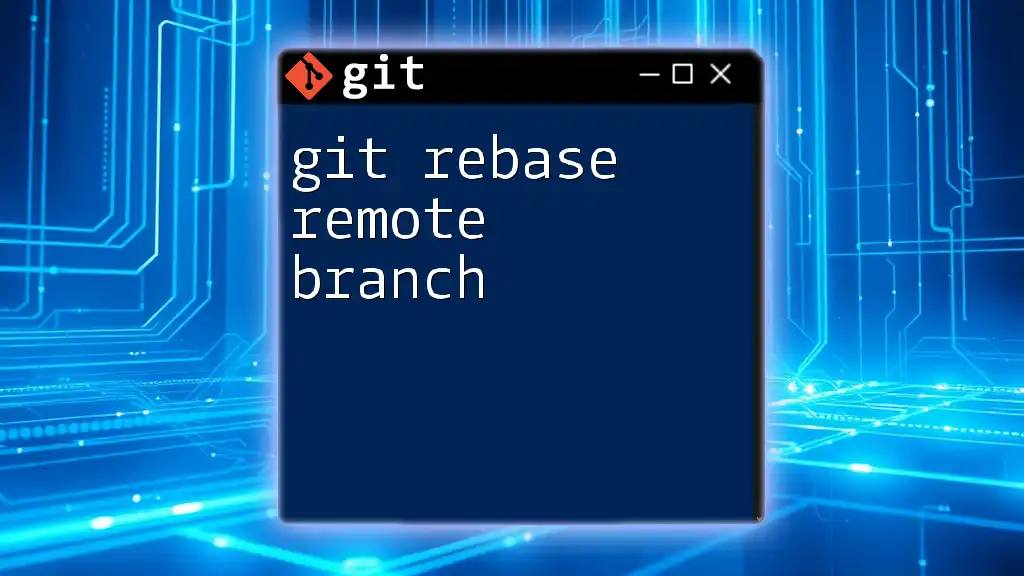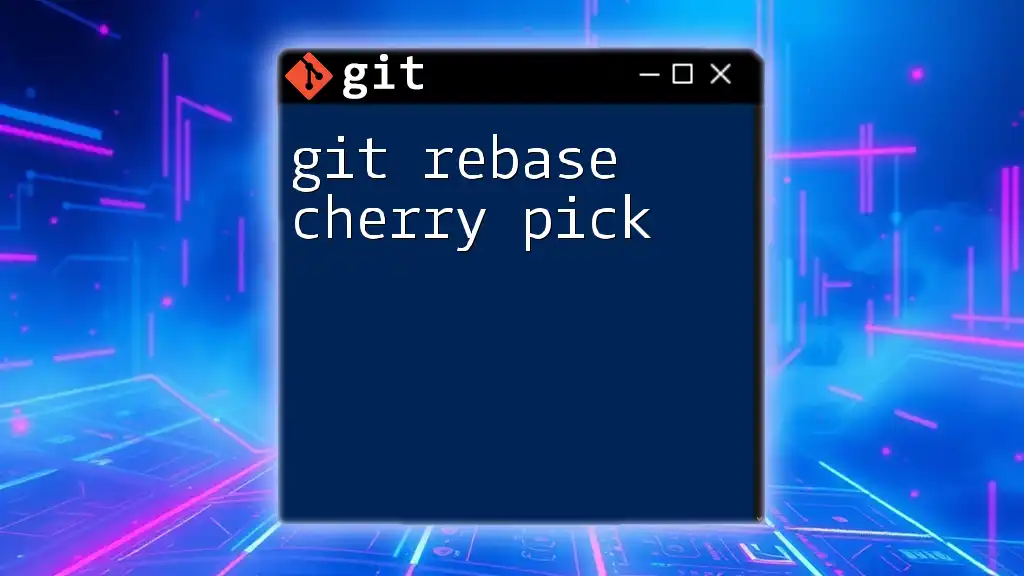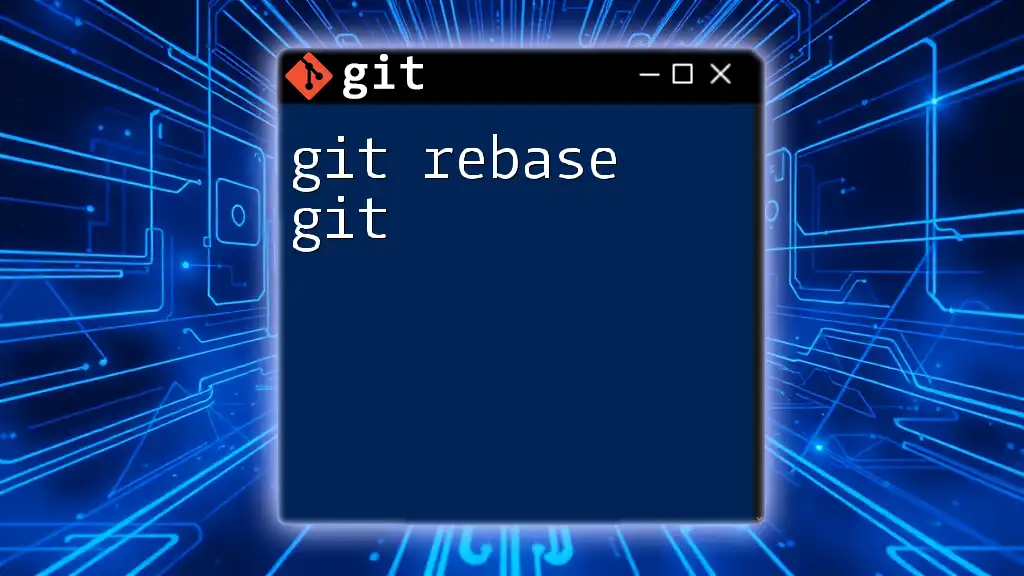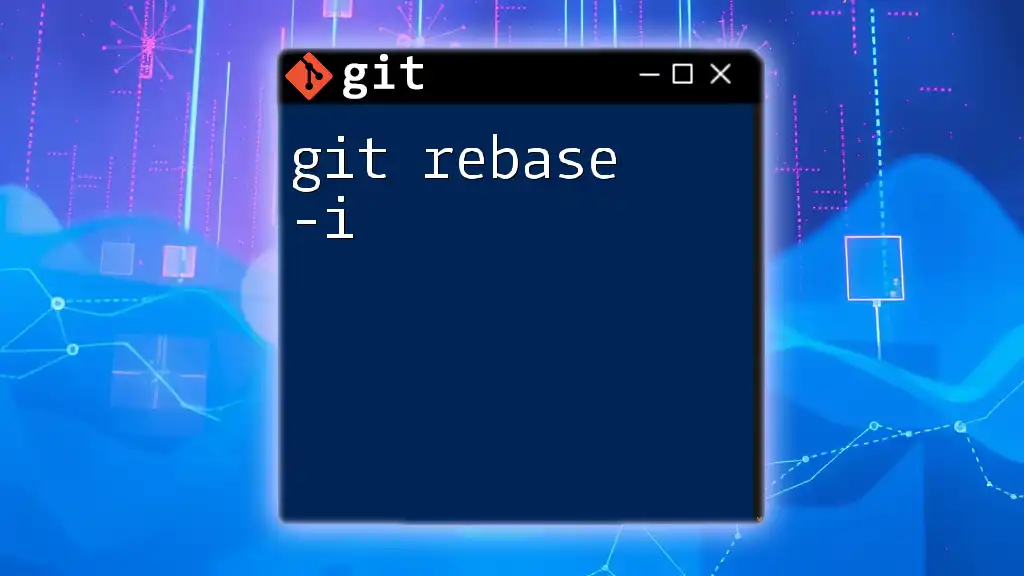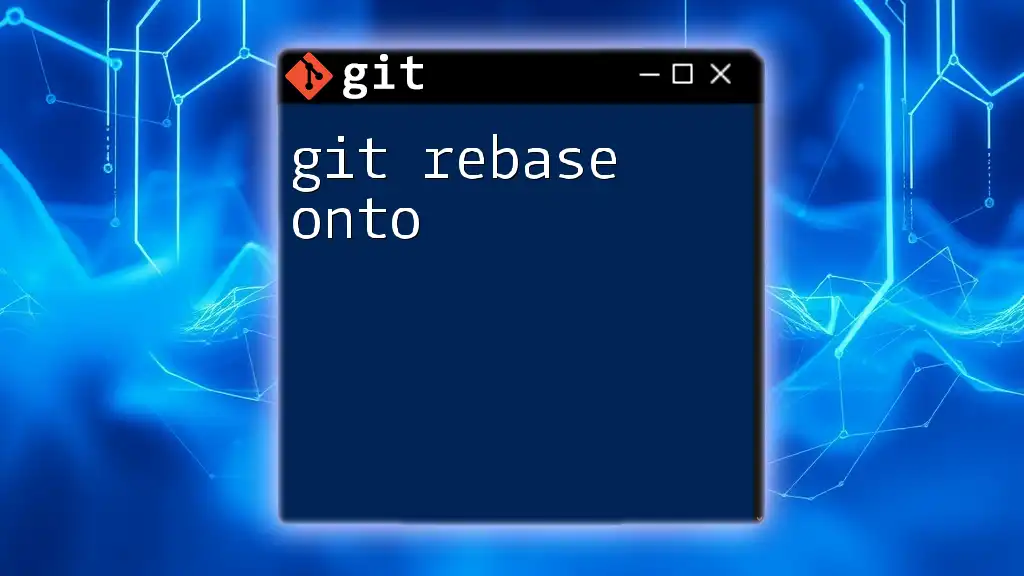The `git rebase --hard` command is used to reset the current branch to a specific commit, overwriting any changes in the working directory and staging area, effectively discarding all local modifications.
git reset --hard <commit>
What is Git Rebase?
Rebasing in Git refers to the process of moving or combining a sequence of commits to a new base commit. It helps in keeping a clean and linear project history by placing your work on top of what came before it. When you rebase, you essentially take all the changes that were committed on one branch and replay them on another, leading to a revised history.
It’s essential to understand the distinction between rebasing and merging. While merging creates a new commit that combines the changes, rebasing creates a linear history without a merge commitment. This can simplify the project history, but it also requires careful management, especially in collaborative environments.
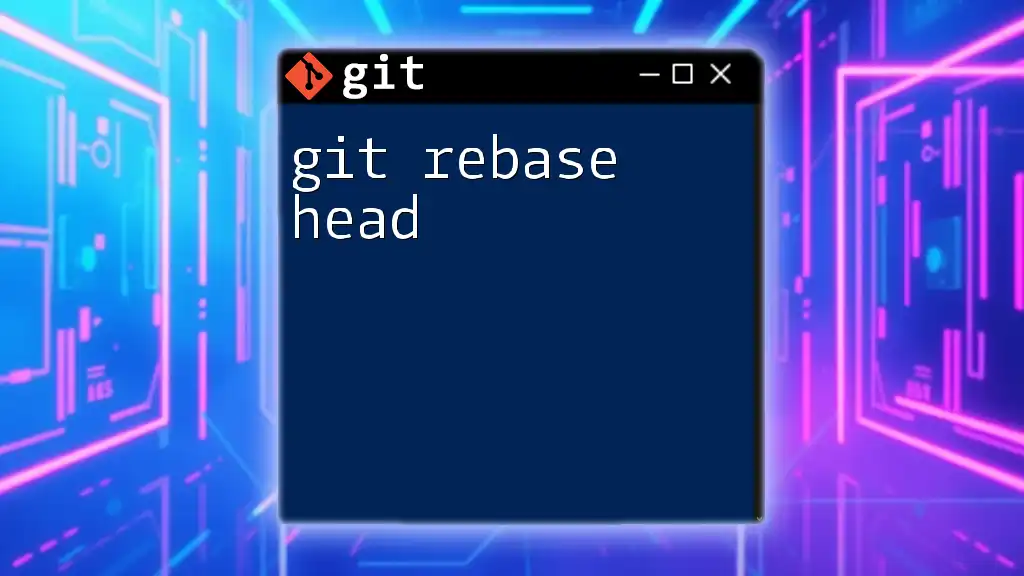
Understanding the ‘Hard’ Option
What Does ‘Hard’ Mean?
When we talk about ’hard’ in the context of `git rebase hard`, we are defining how changes are handled during the rebase operation. Specifically, the `--hard` option indicates that the staging area (index) and the working directory will be reset to match the specified commit. This means that all your uncommitted changes will be lost, and the state will reflect what the repository looks like at the time of the rebase.
Effects of a Hard Rebase
Executing a hard rebase deletes all changes that are not committed. You should always ensure that there are no changes you want to keep before running this command. Backups are crucial, and one way to do this is to either commit your changes or stash them prior to rebasing.
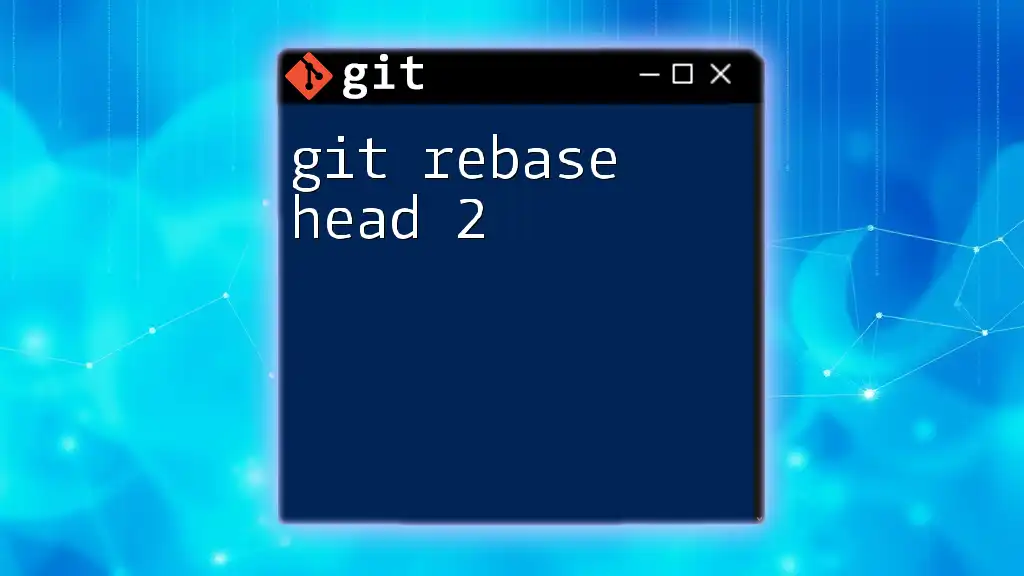
Basic Usage of Git Rebase
Standard Rebase Command
The standard syntax for performing a rebase is as follows:
git rebase <branch>
This command incorporates the changes from the specified branch into your current branch. For instance, if you want to rebase the current branch onto the latest `main`, you would use:
git rebase main
Performing a Hard Rebase
Command Syntax
When you intend to use a hard rebase, the following syntax will be used:
git rebase --hard <branch>
Example Scenario
Imagine you are working on a feature branch and want to pull in the latest changes from your `develop` branch, while also discarding your own uncommitted changes in the process:
git checkout feature-branch
git rebase --hard develop
This command will move your feature branch to the latest commit of the `develop` branch and discard any uncommitted changes you've made in `feature-branch`.
Common Use Cases for Hard Rebase
A hard rebase is particularly useful in scenarios where you want to:
- Clean up your commit history: If you’ve made several changes or commits that you no longer want, a hard rebase can help you consolidate your commits into a more meaningful change history.
- Reset to a known good state: After experimenting with changes that did not yield the desired results, a hard rebase can restore your branch to a previous clean state.
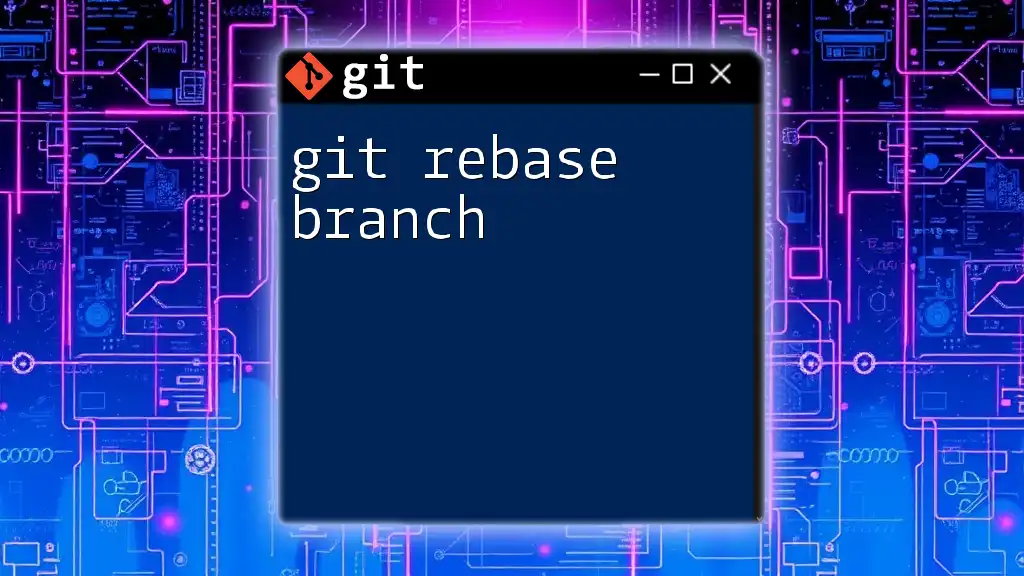
Handling Conflicts During Rebase
What Are Merge Conflicts?
Merge conflicts arise during a rebase when Git encounters changes in both the branch you’re rebasing onto and your branch that it cannot automatically reconcile. Understanding where and why these conflicts arise is crucial for effective conflict resolution.
Resolving Conflicts
When you encounter a merge conflict during a rebasing operation, Git will pause and allow you to resolve the issues. You can check which files have conflicts by using:
git status
After resolving the conflicts in your files, you would execute the following command to continue the rebase:
git rebase --continue
If you decide that the rebase is too complicated and you want to abort the operation, you can use:
git rebase --abort
Using Skip and Abort
Skipping Commits
In cases where you find certain commits unnecessary during a rebase, you can skip them by using:
git rebase --skip
This will allow the rebase to continue without incorporating the skipped commit.
Aborting a Rebase
If you want to revert to the state before starting the rebase, you can abort it, returning the branch to its original condition with the following command:
git rebase --abort
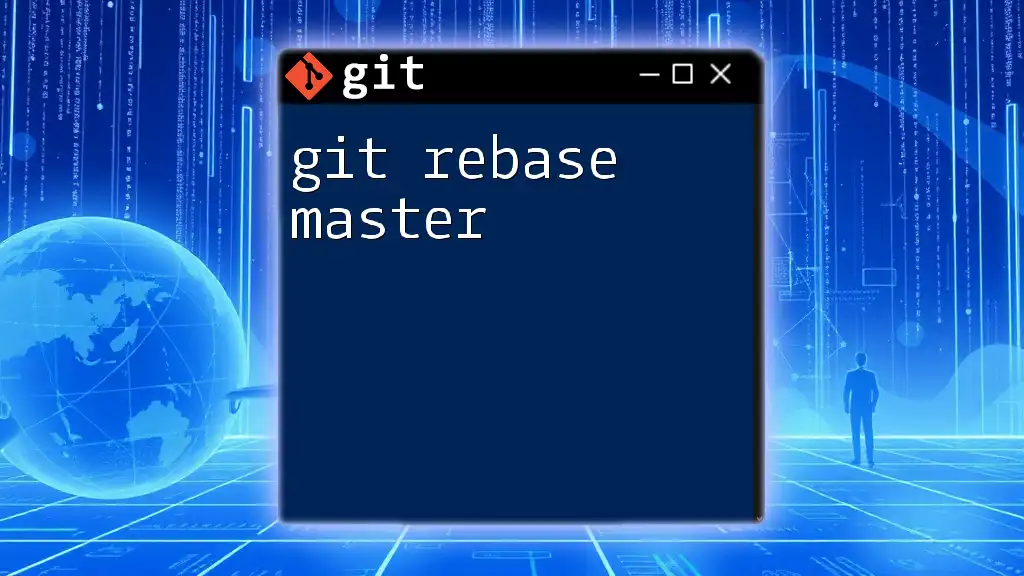
Best Practices for Using Git Rebase Hard
Avoiding Common Mistakes
One of the significant risks associated with `git rebase hard` is the potential for data loss. Always ensure that you do not have any important uncommitted changes before executing a hard rebase. It’s also vital to communicate with your team members if you're working collaboratively to avoid unexpected complications.
Backing Up Your Work
Stashing Changes
Before undertaking a hard rebase, consider stashing any changes you want to keep:
git stash
This command saves your uncommitted changes so that you can reapply them later after you complete the rebase.
Creating a Backup Branch
Creating a backup branch is another effective strategy to safeguard your current work. You can do this with:
git checkout -b backup-feature-branch
This command creates a duplicate of your feature branch for safety before you proceed with a potentially destructive rebase.
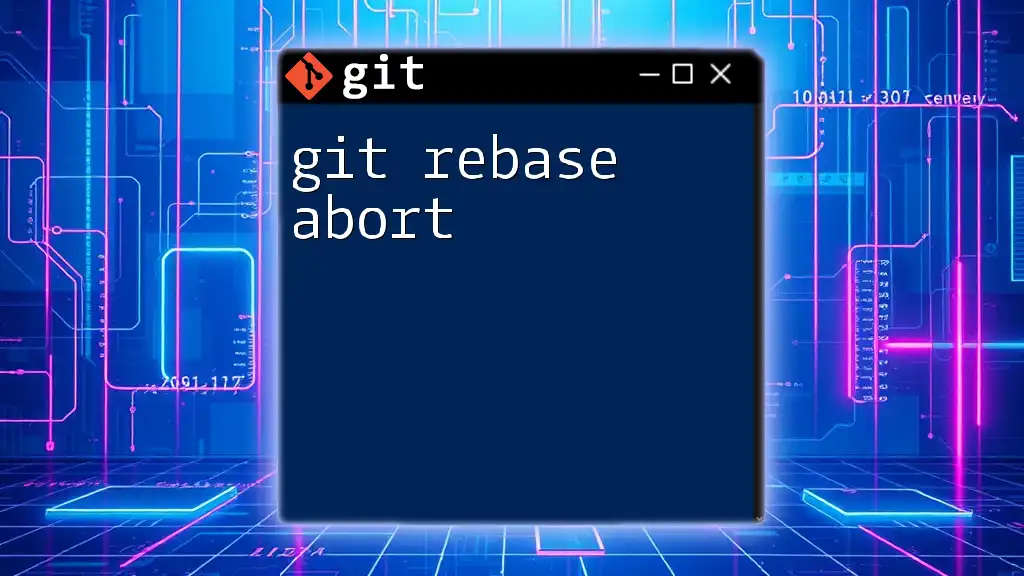
Alternatives to Git Rebase Hard
Exploring Other Commands
While hard rebasing is powerful, it is not the only method available in Git. You might also consider `git merge`, which offers a different approach by bringing changes together but retains the branching history. Additionally, `git revert` allows selective undoing of changes without altering commit history, making it safer in most collaborative scenarios.
Choosing the Right Approach
When deciding between these Git commands, consider factors such as:
- Team workflow: If your team practices a specific branching strategy, align your rebase and merge strategies accordingly.
- Commit history requirements: If preserving commit history is important, consider using merging instead of rebase.
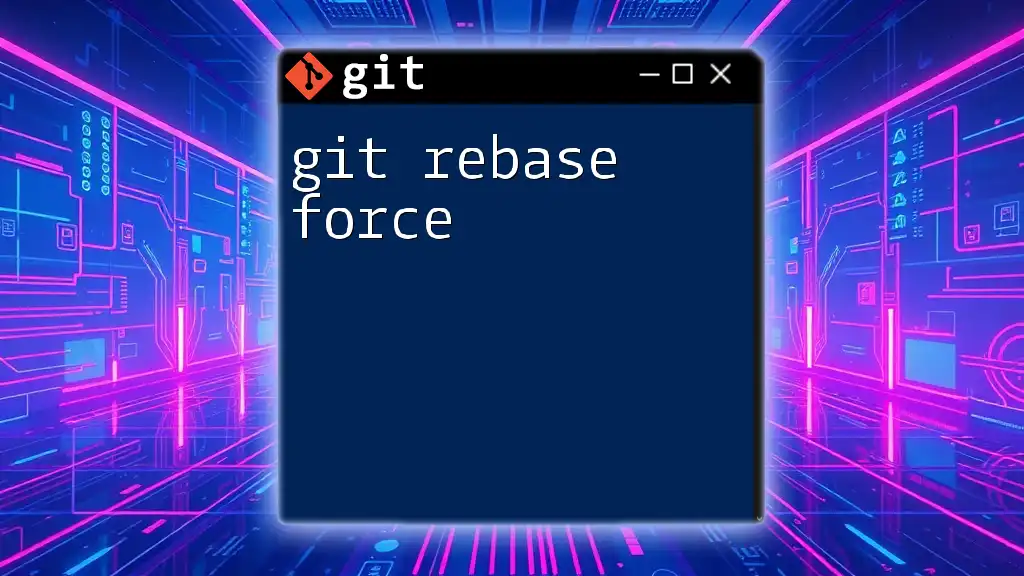
Conclusion
In summary, understanding the implications of `git rebase hard` is essential for effective version control. Always remember to take precautions such as backing up your work and use hard rebase judiciously to maintain a clean and organized commit history. The practice of rebase, while powerful, requires a measured approach, especially in collaborative settings.
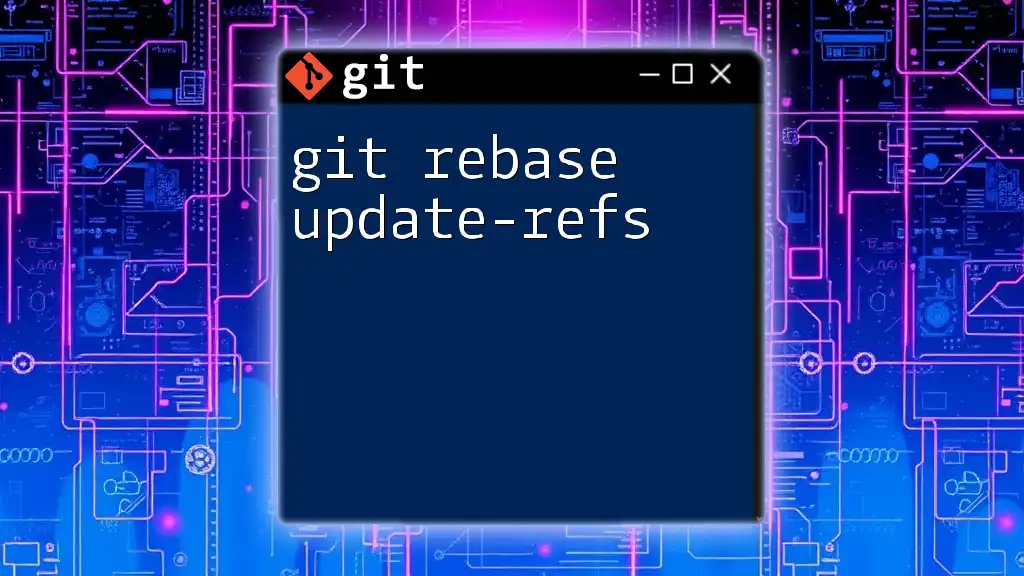
Additional Resources
Links to Further Reading
For deeper dives into Git and its commands, consider checking out the official Git documentation or recommended programming courses tailored to version control.
Practice Exercises
Engaging with practical exercises is an excellent way to reinforce your understanding. Consider experimenting with git rebase in a controlled environment to gain hands-on experience.

